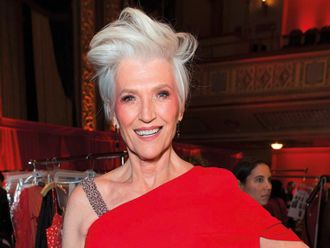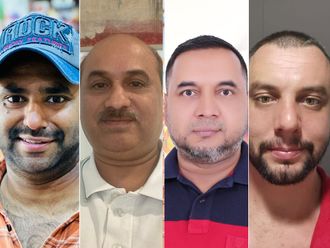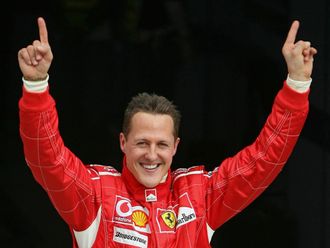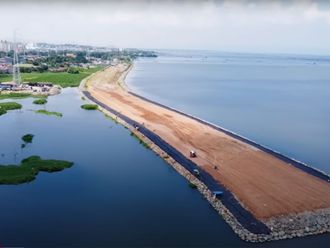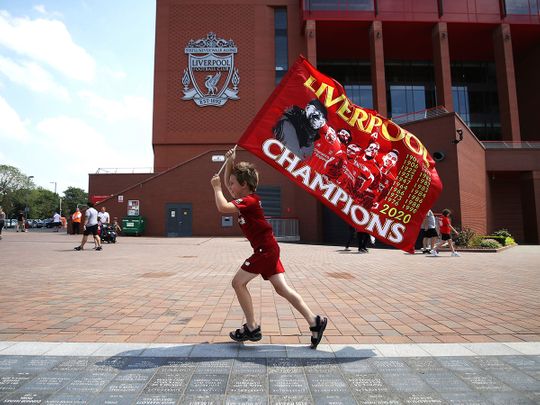
Liverpool’s Premier League triumph this season will deservedly go down in history — from their 30-year wait for an elite title in England, their stylish play and charismatic boss, the records they smashed along they way and — of course — the strangest of coronavirus-elongated seasons.
Here, Gulf News takes a first-person look at why the Reds’ triumph means so much — or so little — and what was the secret to their success after all this time.
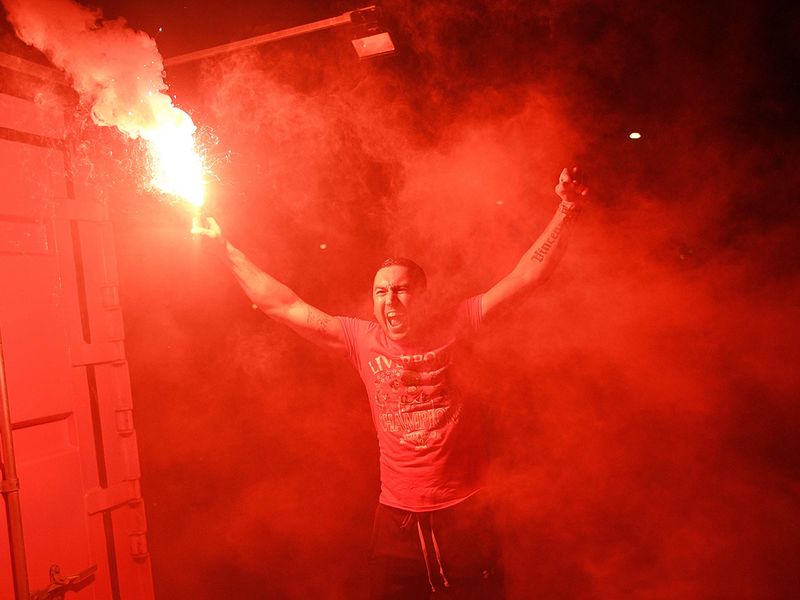
A celebration worth the wait
Shyam A. Krishna, Senior Associate Editor
I have never been a Liverpool supporter. I would have wanted Arsenal to win the Premier League, but the Gunners haven’t been doing well lately. So why not bask in the glory of the Reds? The first domestic league title since 1990, that’s plenty to celebrate.
Over the last 30 years, I have been following the fortunes of Arsenal and keeping a wary eye on rivals Manchester United, who were on a winning streak under Alex Ferguson. Liverpool were never in my sights. What drew me to Liverpool was Jurgen Klopp.
I had watched with interest the German manager’s spell at Borussia Dortmund. Bundesliga is generally a one-horse race, where Bayern Munich’s spending power decided the title every year. The other clubs were no match for a side packed with a glittering array of talent.
Here’s where Klopp stood out. Every year, Dortmund went toe-to-toe with Bayern, sometimes even pulling off an upset. Klopp has the unique ability the best out of his players. Actually, I was surprised when he quit. When Klopp came to Anfield in 2015, I wanted to him succeed. The Premier League can be tough on foreign managers. The intensity of contests, the tight schedule of matches, the demanding fans and cut-throat media can be quite a handful. But foreign managers have been successful.
You don’t have to look beyond Arsenal, where Frenchman Arsene Wenger had a long spell during which the Gunners saw one of their best winning streaks. Jose Mourinho and Pep Guardiola too enjoyed success.
Klopp calls his football to heavy metal music. It did wonders for Liverpool football club. Four trophies in three years, including the silverware from Champions League and Premier League. What more could you ask of him?
What’s remarkable is the way he rebuilt the side. Particularly how he sold Philippe Coutinho and used the money effectively to plug the holes in the squad. Virgil van Dijk shored up the defence, while the goal was safe under Alisson Becker. These two purchases were the key.
Up front Mo Salah has had the best three seasons of his life. Sadio Mane was a revelation. There many doubters when the Senegalese international arrived at Anfield. But under Klopp, Mane blossomed as he put away the passes conjured up Roberto Firmino.
More than the title wins, I would remember Klopp for Liverpool’s victory over Barcelona in the 2019 Champions League when the Reds overturned a 3-0 first-leg deficit with 4-0 win at home. Injuries to Salah and Firmino forced Klopp to field a new-look front-line. And how Klopp marshalled his resources to blunt a Lionel Messi-led Barcelona was truly outstanding. It was the work of a master tactician.
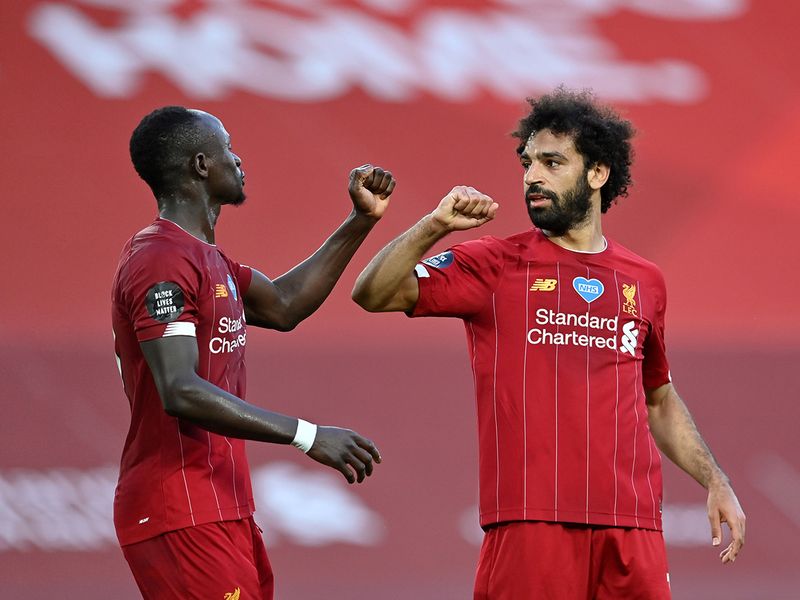
A title of convenience for Liverpool
Matthew Smith, Sports Editor
This Liverpool team is not that remarkable to me. They have no Cristiano Ronaldo nor Lionel Messi, who can carry his team and time and again single-handedly turns matches on their heads. No offence to Mo Salah and Sadio Mane, but for all their talent they are still a country mile behind guys like CR7, Leo, Zlatan and Zidane — even Beckham and De Bruyne are better as individual talents.
The overriding factor to the Reds’ relentless march this campaign is quite simply, the others have regressed. Outgoing champions Manchester City are still looking for long-term replacements for the sorely missed captain Vincent Kompany, and the ageing legs of elder statesmen David Silva and Sergio Aguero, who are becoming more and more susceptible to injury.
The highly impressive Chelsea would sure have also pushed Liverpool a lot closer had new coach Frank Lampard been allowed to spend during the two transfer windows that the London club had to serve a suspension in player trade. The other traditional threats — Arsenal and Manchester United — have been lamentable this season, with the Gunners already on a new coach and showing little signs of light at the end of the tunnel and Ole Gunnar Solskjaer’s Jekyll and Hyde team only now beginning to show the slightest of signs that they could be a threat next term. Meanwhile, Tottenham are doing what Tottenham do best, being also-rans, and they do not look like a major problem in seasons to come under the me-first attitude of coach Jose Mourinho.
So, yes, Liverpool are deservedly champions and, granted, they thoroughly deserve their long-awaited day in the sun, but this team is by no means a group of superstars — all they have done is show how much work the others need to do.
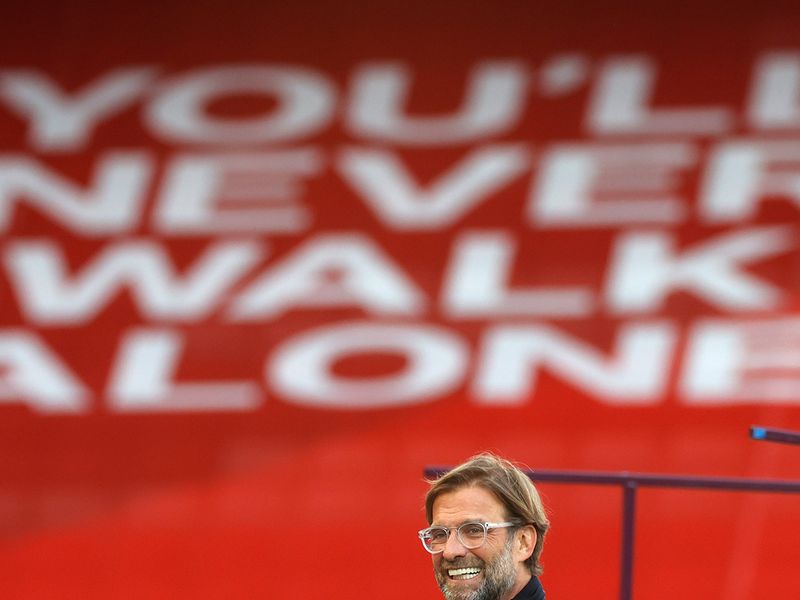
Unifying Klopp has been the key
Ashley Hammond, UAE Editor
The quick and simple answer to how Liverpool have managed to achieve league title success for the first time in over 30 years this season is their manager, Jurgen Klopp.
His background of having led perennial bridesmaids Borussia Dortmund to two German league titles, despite them living under the shadow of the mighty Bayern Munich, was a perfect preparation for what would be needed in England if Liverpool were to finally get the better of their greater adversaries in Manchester. Liverpool and Dortmund are two very similar clubs in two very similar towns and in his appointment Liverpool not only got a coach who would understand the city and the club, but who also had the pedigree to actually get them over the line.
In the past three decades the Reds have had managers who bound the fans with the players and got the city ticking. Roy Evans, Gerard Houllier, Rafa Benitez and Brendan Rodgers were, of course, all close and had their moments, but none of them had the track-record of Klopp. When you tie in this ability — something that breeds confidence and faith among the fans and players — with his understanding and charisma to bind everyone as one, then you have a very special formula indeed.
Bind that with the financial backing to finally keep a squad together without having to sell your best players, and the nous to pick good signings that would add to the blend, and it becomes hard to beat. On top of this, you also need other cycles to turn in your favour, Manchester United and City haven’t really challenged and the London clubs are still restarting after their own change in phase.
That aside this moment belongs to one man, a person who exudes passion and who personifies the spirit of a city, with his working class, socialist style of man management and play. His heavy metal philosophy of getting back on the ball instead of dropping back once they’ve lost possession also nods to what made the city great: togetherness, hard work and passion.
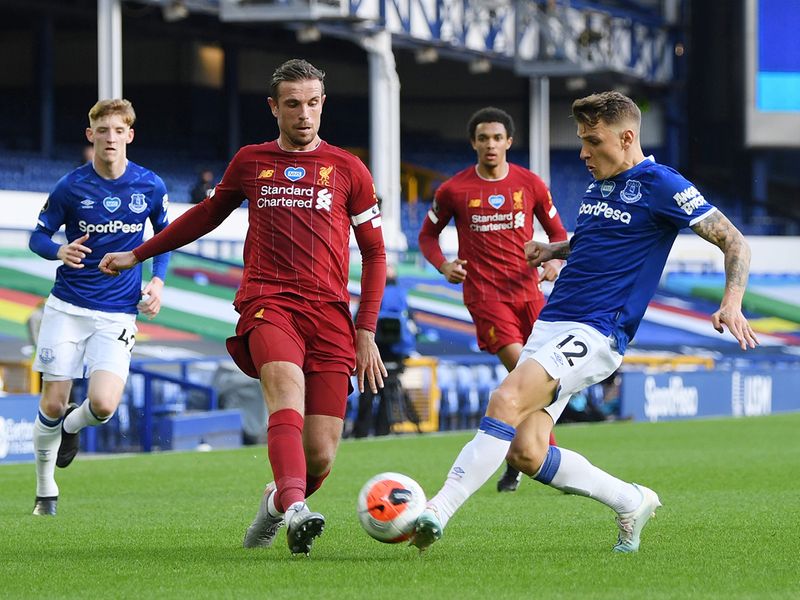
Agony from blue half of Liverpool
Imran Malik, Senior News Editor
A Doomsday scenario was avoided for this Everton fan. Liverpool did not win the title at Goodison Park, our home. It was a very real and very gut-wrenching possibility, however, results went our way and the Reds had to wait a week after the derby which ended all square to officially be crowned champions. Had their first title in 30 years been sealed at the Grand Old Lady, it would have been a very bitter pill to swallow. It would have given them the ultimate in cross-city bragging rights.
It would have hurt the blue half of Merseyside badly. Really badly. Would I have ever gotten over that lot celebrating on the hallowed turf — an arena that gave birth to Toffees legends Dixie Dean, Graeme Sharp, Duncan Ferguson and so many others, the host of more top-flight games than any other in England and even the venue of the 1966 World Cup semi-final? Probably never. The two teams in Liverpool are known in the football world for their ‘friendly rivalry’ (both clubs have done plenty together in promoting harmony and justice within the city by focusing on things in life more important than football — despite Shankly’s famous life or death quote …) — but a win for them at L4 4EL and things could have gotten ugly.
Liverpool are the best team in the world right now. Jurgen Klopp is a very impressive manager and deserves all the praise for the work he has done in the last five years since taking over at Anfield and totally transforming the fortunes of the club.
They’ve come close several times in being top of the pile. They pushed City all the way but lost out last season by a solitary point and even Brendan Rodgers’ side were challenging until Gerrard, the man with the best first touch in the game, slipped, and the title was gone.
- What now for Liverpool after ending Premier League title drought?
- Hungry Klopp plans to build on Liverpool's English Premier League title win
- Premier League champions: Klopp has turned doubters into true believers with Liverpool
- What they said: Liverpool - English Premier League champions
- From LeBron to Wozniacki: Celebrities line up to congratulate Liverpool
As an Evertonian, these incidents make me laugh very, very hard and I have very good reason. Cast your minds back to 1985. We had clinched the league championship by 13 points and with the likes of Southall, Ratcliffe, Reid, Sheedy and Gray, we were the best team in England. Most agreed we were the best in Europe too. Sadly, the club’s greatest side never got to compete on the biggest stage because of the Heysel Stadium disaster that year. Liverpool were playing Juventus in the European Cup Final when a stampede by both sets of fans resulted in the death of 39.
It led to all English clubs being banned from European competition — but it should only have been the two involved in the tragedy. Why were we punished too? That great Everton side would go on to win the league once more in the 86-87 season before the lack of European football saw our best players and our greatest ever manager, the late Howard Kendall, depart to further their careers. It was the last time my club competed for top honours and a decline followed during the 90s and the start of the Premier League where TV broadcasting rights favoured clubs higher up in the league, who in turn received more money, were able to buy better players and as a result they enjoyed lots of success. We were left behind.
Had the class of 85 been allowed to compete at the highest level, we would have beaten everyone and things would have been so very different. Instead, we have been struggling while Liverpool have been winning. So, they are champions and worthy ones, too. Salah, Mane and Firmino would get into any team in the world and while Klopp’s there, they’ll be hard to catch. But, we have Ancelotti now. There are exciting times ahead for the blue and red half of Merseyside — but I’ll leave you with this jewel of a fact: Everton, formed in 1878, won the league at Anfield which was our previous home long before Liverpool even existed! It’s a stat we remind our noisy neighbours about every chance we get. Two great clubs in this city? For sure there are. One is Everton. The other is Everton reserves.
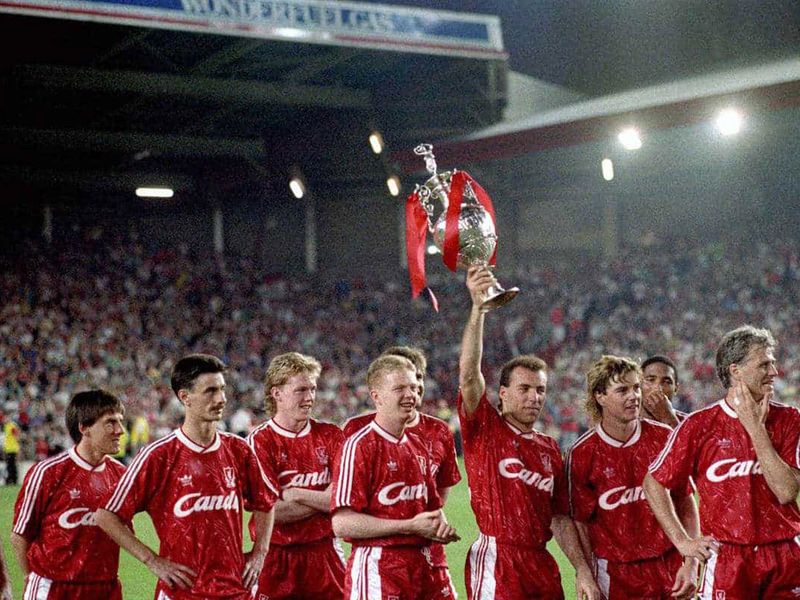
Everything you need to know about Liverpool FC
Imran Malik, Senior News Editor
Ever since the English Premier League was formed in 1992, Liverpool have won numerous FA Cups, League Cups, and the holy grail — the Champions League. But, the league title, secured an incredible 18 times, had eluded the red half of Merseyside for 30 long years. It is considered their bread and butter, and they have had to wait patiently for this particular moment — but now fans of the Reds all over the world are understandably ecstatic having safeguarded their first title in decades. Most of the praise is being hurled at manager Jurgen Klopp and star strikers Mo Salah, Sadio Mane and Roberto Firmino. The truth is the entire team has been instrumental in winning their first Premier League title and fans will be singing the names of every player at the Kopp for years to come. Older fans will be fondly remembering club legends such as John Barnes, Kenny Dalglish and Ian Rush. But who could forget what the Bob Paisley and Bill Shankly era in the 1960s and 70s did for the club? However, everyone associated with Liverpool Football Club needs to thank one man for literally everything it has ever achieved. And, he wasn’t even a player or manager. He was a landlord … Here’s a brief history of Liverpool FC.
Key men
John Houlding
There are two football teams in the city of Liverpool but had it not been for a rental dispute back in 1892, there would have only been one — Everton FC. Formed in 1878, Everton played their home games at Anfield — yes, Liverpool’s current home. But, owner of the stadium, John Houlding, kept increasing the rent due to the team’s on-field success. Everton wouldn’t pay up and decided to leave and build another ground — just one mile away on the unused Mere Green field on Goodison Road — and separated by Stanley Park. This became Goodison Park — the very first purpose-built football stadium in England. Houlding, left with an empty arena, decided to form his own team. He originally wanted to name them Everton Athletic to spite the former committee but the English Football Association didn’t allow it. So, he opted to call them Liverpool. The first meeting of the two teams ended in a resounding 3-0 win for Everton, the original team of Merseyside, but the red half has enjoyed far more success ever since. But to think they wouldn’t have even existed had Houlding not been so greedy makes the mind boggle.
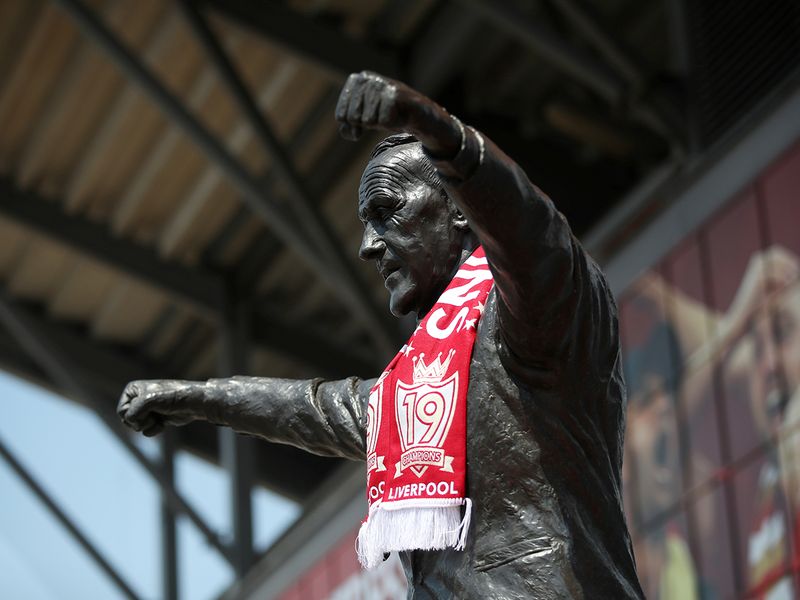
Bill Shankly
The most iconic figure in the history of the Reds. It was under his tutelage that they really announced themselves on the football world map. The brash Scotsman became manager of the team in 1959 and his controversial yet revolutionary methods of training proved greatly successful. Emphasising a professional work ethic at the club, he didn’t just transform the club but the professional football league changed greatly due to him too. He would speak his mind and was unlike any other Liverpool manager. Under Shankly, Liverpool won 10 trophies including one UEFA Cup, 3 First Division titles, 1 Second Division title, 2 FA Cups, and 3 FA Charity Shields. When he retired at just age 60, people thought Liverpool’s dominance would come to an end.
Bob Paisley
They were wrong. Bob Paisley, Shankly’s assistant manager, took over as coach. Filling the shoes of the club’s greatest boss was a daunting task but Paisley surpassed his achievements. Kenny Dalglish, Alan Hansen, Graeme Souness, Alan Kennedy, Ronnie Whelan, Ian Rush and Mark Lawrenson were just some of the players he brought to Anfield with each cementing themselves as a club legend. Paisley won a trophy in every single calendar year while he was manager. It was an incredible run of success where a total of 20 trophies between 1974 and 1983 were secured. Paisley spent nearly 50 years with the club starting off as a wing-half, then after his playing days he became a physiotherapist, then coach and then manager. Funnily enough, he won everything there was to win — apart for the FA Cup.
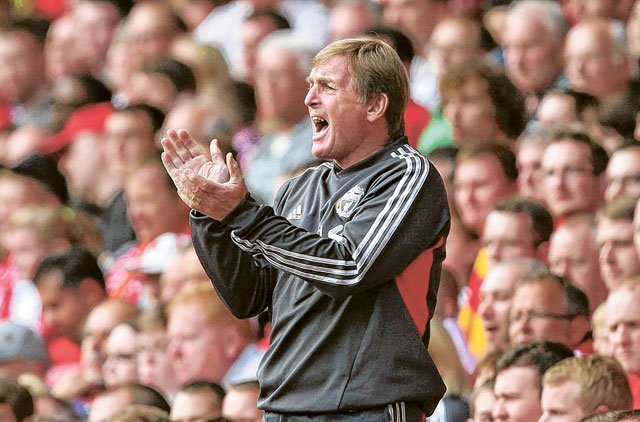
Kenny Dalglish
Known as ‘King Kenny’, Dalglish was a star player and manager, simultaneously. When he succeeded Joe Fagan as manager, he became the first person in English football history to both manage and play for a team. The Scottish phenomenon scored 172 total goals for the club and as manager he won 10 trophies. He might have won more had all English clubs not have been banned from Europe following the Heysel disaster in 1985.
Disaster: Heysel and Hillsborough
During his time as manager, Dalglish was witness to two horrific disasters — the first of which took place at the 1985 European Cup Final while Liverpool were playing against Juventus in Belgium at the Heysel stadium. Liverpool fans started throwing rocks at Juventus fans and with just a fence separating the two sets of supporters, this was broken down and a massive riot began. Thirty-nine fans lost their lives and more than 600 were badly injured. Twenty-six Liverpool fans were charged with manslaughter and extradited to serve sentences in Belgium. And, all English football teams were banned for five years from competing in Europe. The second disaster came just four years later at Hillsborough during a Liverpool and Nottingham Forrest cup tie. Due to overcrowding in the Liverpool end of the ground and poor policing, Liverpool fans were crushed against the metal caging at the front of the stand. These were common at most stadiums in the day and were designed to keep fans safe from stray footballs and to protect players from pitch invaders. But, it cost 96 fans their lives while 766 were injured. The question of who was at fault had been contested ever since but in 2013 an English court officially decided the lack of effective policing was the cause of the tragic incident.
The Premier League era
English Football League’s First Division was rebranded in 1992 as the English Premier League, and it saw the rise of Alex Ferguson and Manchester Utd as the dominant force. The EPL also saw many clubs hire non-British managers along with the influx of foreign players while the money from TV broadcasting rights created a massive salary increase for everyone in the game. Since 1992, Liverpool have attracted some of the best players in the world from the likes of Fernando Torres, Luis Suarez and Xabi Alonso. During this time, the club also unearthed some fabulous home-grown players including Robbie Fowler, Steven Gerrard and Michael Owen. Still, Liverpool only averaged a fourth-place finish in EPL history and finished runners up in 2002, 2014 and 2019, until finally blowing everyone away this season. Rafa Benitez is one of the clubs most popular managers during the EPL era where he won a total of fur trophies including the famous ‘Miracle in Istanbul.’
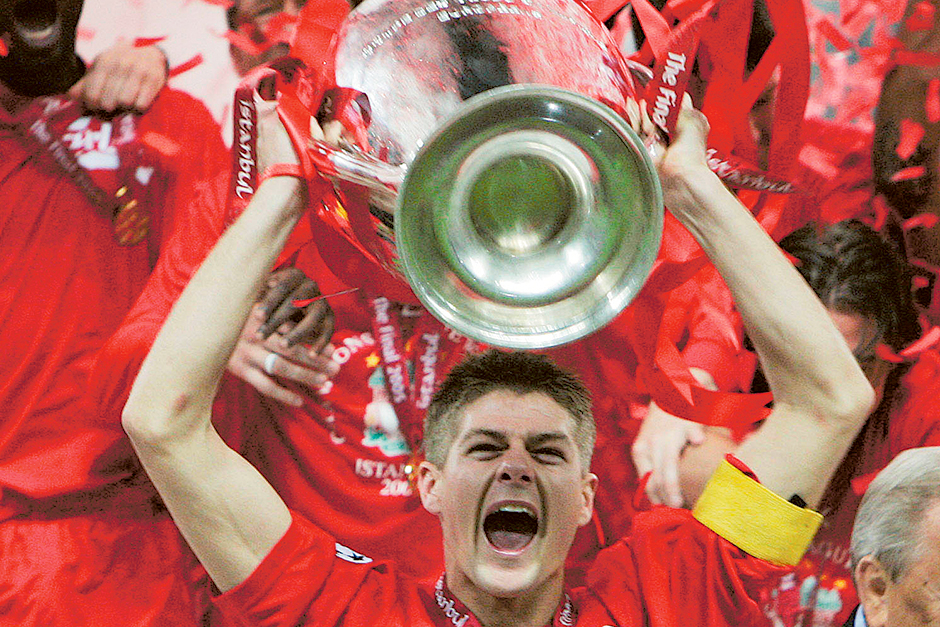
The Miracle in Istanbul
It was the game where Gerrard scored an absolute belter against Olympiakos at Anfield in the quarter-finals of the Champions League which sent them through to the semis against Chelsea and, even though that Liverpool side wasn’t anything really special, they had plenty of character and never threw in the towel. The semi against the Blues was a highly contentious affair but the Reds found themselves in the final facing Italian powerhouse AC Milan who literally tore them apart in the opening 45 minutes. A daunting 3-0 down at half-time, the question was how many more would Liverpool concede. But, somehow, they rallied to pull one back. And then another. And then another. Liverpool’s keeper Jerzy Dudek made some incredible saved to deny the Italians a fourth. The game went to a penalty shoot-out where the Merseysides eventually won what was a thrilling contest. It was nothing short of a miracle.
Here comes Klopp
AC Milan would get their revenge in the 2007 Champions League final even though this time Liverpool were the favourites. Benitez was sacked in 2010 and successor Roy Hodgson almost took them down. He was also fired and the club turned once more to ‘King Kenny’ hoping he would ignite some passion and drive into the team. He spent £115 million on new players but results were mixed. Kenny would be replaced by Brendan Rodgers who really got the team playing some nice stuff. They were on the verge of title success but with 3 games left of the season, they choked. Suarez moved to Barcelona and Raheem Sterling controversially joined Manchester City. Club legends Gerrard and Jamie Carragher also left and when results started to dip, Rodgers was shown the door. But in came Klopp from Borussia Dortmund bringing his ‘heavy metal’ style of football and in just five years he has transformed the fortunes of the club. He’s already won the Champions League, Super Cup and Fifa Club World Cup with the Reds before finally lifting their first EPL.
Anfield expansion
Under Fenway Sports Group (FSG) ownership (who took over from Tom Hicks and George Gilett in 2010) Liverpool’s new American owners have pumped millions into the club and raised its value from £300 million to nearly £900 million. Along with money for new signings, they have also overseen the expansion of Anfield. Phase one has seen a new Main Stand developed which has taken capacity to over 54,000 while Phase two will see the addition of 7,000 seats added at the Anfield Road End stand which will take the famous arenas overall capacity to over 61,000.
Five best players
Steven Gerrard
Was the captain, the role model and the hero of the red half of the city. The local lad rose through the ranks to lead his beloved club to Champions League glory, two FA Cups and three League Cups. Gerrard scored over 150 goals during his 14 years with the club.
Kenny Dalglish
With 172 goals scored, he is probably most remembered for his European Cup clinching goal in the 1978 final. The deadly duo of Dalglish and Rush sprang fear into opponents’ hearts throughout the late 70s. After his playing days, he managed the team to three First Division titles and one FA Cup from 1985-91.
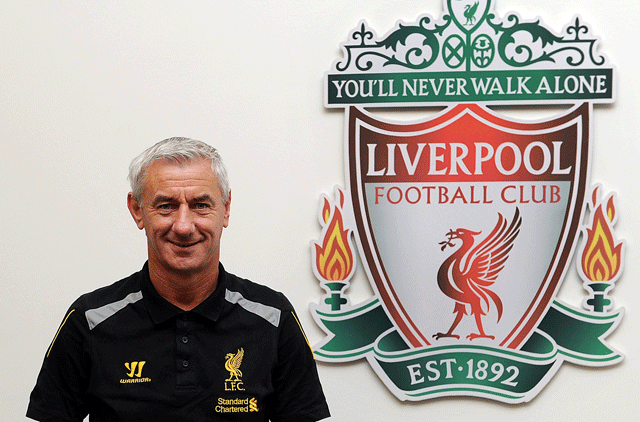
Ian Rush
Rush was a true inspiration during his time as a Red, and maintains Liverpool’s all-time goalscoring record with 346 goals in 660 appearances.
John Barnes
Barnes was the first black Liverpool player during a time of deep racial inequality. He will forever be remembered for the unstoppable mixture of power, pace and skill that left opposing defenders shaking in their boots. He netted on 108 occasions in his 10-year stint with the Reds.
Alan Hansen
During his nearly 15-year career with the Reds, Hansen won it all. The league (eight times), the FA Cup (twice), the League Cup (four times), and the European Cup (three times). He was an integral part of what many consider to be Liverpool’s greatest-ever defensive unit.
Liverpool FC timeline
1892 The club is established.
1893 Member of the Football League.
1894 First season in Division 1.
1901 Win Division 1 for the first time.
1959 Bill Shankly is appointed as manager.
1965 Win their first FA Cup.
1973 First UEFA Cup trophy.
1977 First European Cup title.
1981 First League Cup title.
1981 Winning their first British Double (the League and the League Cup).
1984 Winning their first Treble (League, League Cup and European Cup).
1984 Ian Rush score 47 goals during the 1983—84 season and breaking the club record.
1985 Heysel Stadium disaster.
1989 Hillsborough disaster.
2005 First Champions League title.
2006 The American business man Tom Hicks become the new owner of the club.
2018 Philippe Coutinho is sold to Barcelona for £142 million, a new club transfer record.
2020 Win their first English Premier League
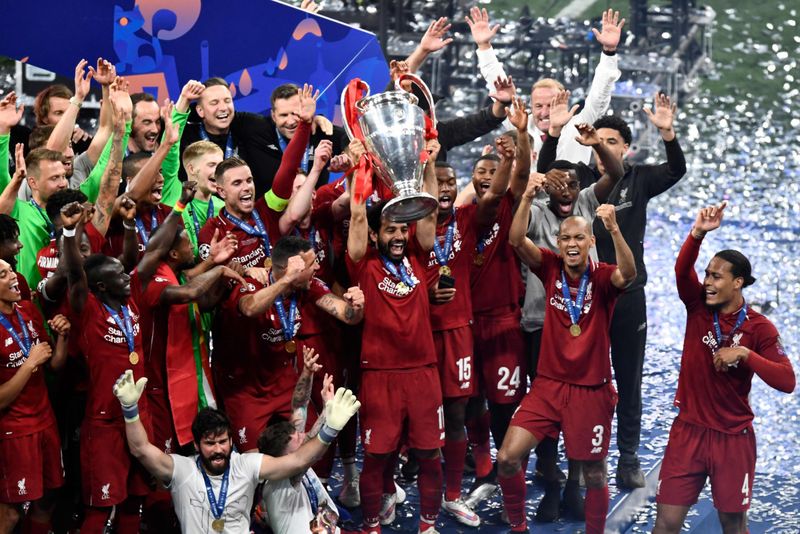
Roll of honour
Premier League — 2019-20
European Cup — 1976-77, 1977-78, 1980-81, 1983-84, 2004-05, 2018-19
First Division — 1900-01, 1905-06, 1921-22, 1922-23, 1946-47, 1963-64, 1965-66, 1972-73, 1975-76, 1976-77, 1978-79, 1979-80, 1981-82, 1982-83, 1983-84, 1985-86, 1987-88, 1989-90
FIFA Club World Cup — 2019
FA Cup — 1964-65, 1973-74, 1985-86, 1988-89, 1991-92, 2000-01, 2005-06
League Cup — 1980-81, 1981-82, 1982-83, 1983-84, 1994-95, 2000-01, 2002-03, 2011-12
UEFA Cup — 1972-73, 1975-76, 2000-01
Uefa Super Cup — 1977, 2001, 2005, 2019
Charity Shield — 1964*, 1965*, 1966, 1974, 1976, 1977*, 1979, 1980, 1982, 1986*, 1988, 1989, 1990*, 2001, 2006 (*shared)
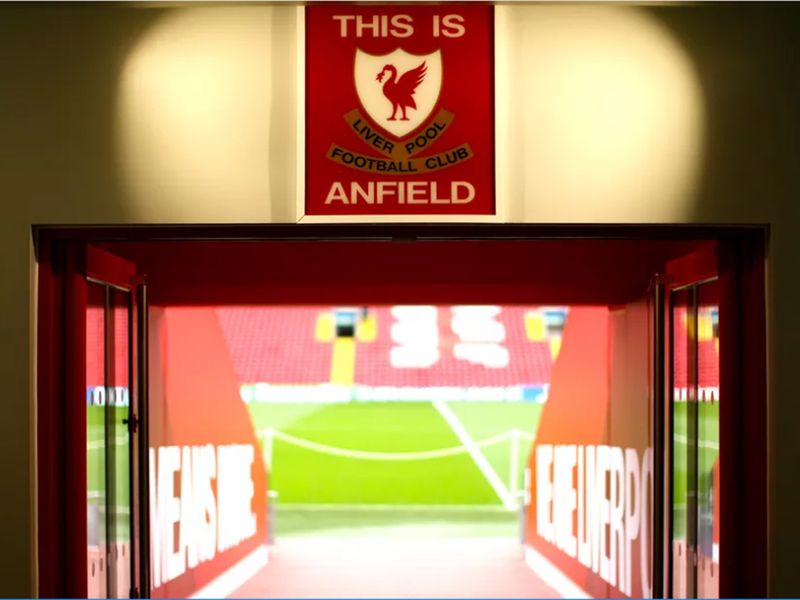
Did you know …
Liverpool may be known as The Reds today, but their original strip was actually blue and white quarters.
Striker Ian Rush — who played 668 times scoring 346 goals — played for the Reds seven times on New Year’s Day and he scored each time!
Abel Xavier is the only player to appear for both Liverpool and Everton in Merseyside derbies in the same season.
In March 1967, more than 100,000 fans watched a Merseyside derby; 64,000 watched the FA Cup clash at Goodison and more than 40,000 watched on closed-circuit relay at Anfield.
The team the Reds have been drawn against in the FA Cup on the most occasions is Everton. This season was the 19th time the sides had been paired together in the world’s oldest domestic club competition, five of which required at least one replay.
In the history of the club, Liverpool’s worst record is against Man United with a win percentage of just 32 per cent.
The first ever game shown on Match of the Day was Liverpool vs Arsenal in August 1964. Liverpool also featured in the first-ever game televised in colour when they took on West Ham in November 1969.
The famous ‘THIS IS ANFIELD’ sign was erected by Bill Shankly to instill fear in the opposition players.
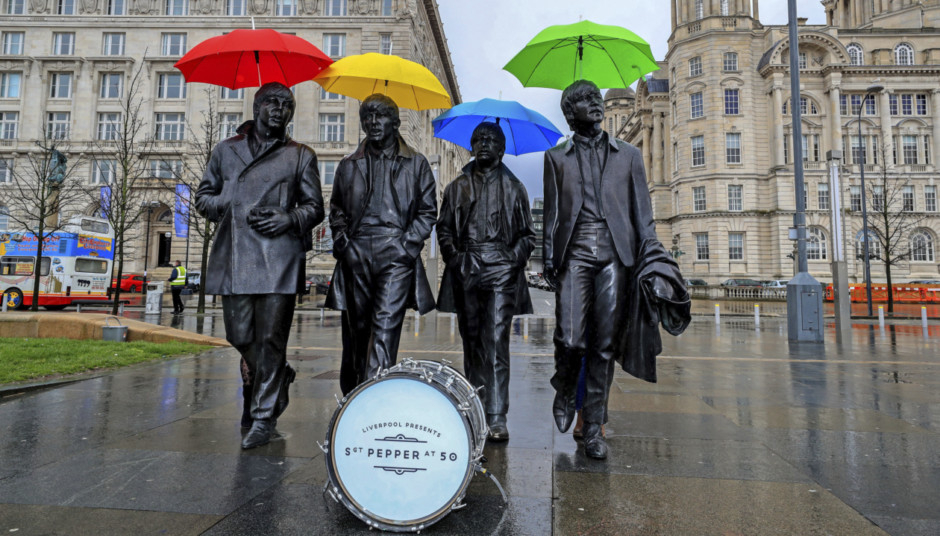
What else is Liverpool famous for?
Apart for the two football teams, Liverpool, a city in the northwest of the UK, punches well above its weight in terms of culture.
Royal Albert Dock: The docks are the centre of tourism in the city what with a collection of bars, cafes, restaurants, museums and hotels built within former warehouses. Many of the buildings here are Grade I listed and so this area retains the feel of its former industrial glory.
The Beatles Story: The Beatles are the most well known band in the history of popular music and you can trace their story at The Beatles Story tour at the Britannia Vaults, Albert Dock which charts the whole career of the Fab Four.
Tate Liverpool: You can check out acclaimed British and international modern art here with works from Lowry, Picasso and Pissarro all on permanent display.
Take the Ferry Across the Mersey: Head to Liverpool Pier and take a ferry across the River Mersey which was once the main artery of the city. A trip aboard a Mersey ferry lets you to see all the interesting sights along the water.
The British Music Experience: Head to the Cunard Building for a journey through the last 60 years of Britain’s best bands and musician from Oasis, Queen, David Bowie to Coldplay. You can pick up an instrument and jam along too!
Climb up Radio City Tower: At 138 metres, this is the tallest tower in Liverpool. Built in 1969 at St John’s Beacon, from the top you can see all the way into Wales on a clear day.
Shop at Liverpool One: The trendy shopping centre on 5 Wall Street features international brands such as Zara, GAP, Karen Millen, and an exclusive branch of Beauty Bazaar by Harvey Nichols.



